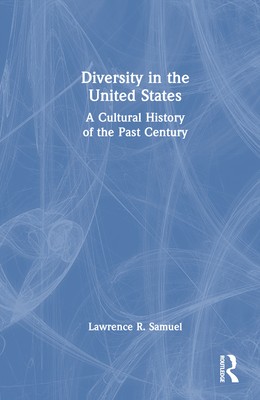
- We will send in 10–14 business days.
- Author: Lawrence R Samuel
- Publisher: Routledge
- ISBN-10: 1032452404
- ISBN-13: 9781032452401
- Format: 15.2 x 22.9 x 1 cm, kieti viršeliai
- Language: English
- SAVE -10% with code: EXTRA
Reviews
Description
Diversity in the United States: A Cultural History of the Past Century is a cultural history of diversity in the United States over the past one hundred years. Diversity--defined here as Americans of different racial, ethnic, and religious backgrounds--is currently very much in the national conversation. The book explores diversity in a historical context, bringing a much-needed perspective on what is a passionate theme in contemporary American society.
Told chronologically and divided into five twenty-year eras, the book sheds new light on the important role that diversity has played in our national identity. The subject is parsed through the voices of intellectuals and journalists who have weighed in on its many different dimensions.
The primary argument of the work is that the concept of diversity has functioned as a key site of both congruence and division in the United States for the past one hundred years, providing a sense of who we are as a people while at the same time exposing inequities based on race, ethnicity, and religion. Both an academic audience and the many readers of non-fiction will find the book to be a valuable and insightful resource.
EXTRA 10 % discount with code: EXTRA
The promotion ends in 23d.12:46:53
The discount code is valid when purchasing from 10 €. Discounts do not stack.
- Author: Lawrence R Samuel
- Publisher: Routledge
- ISBN-10: 1032452404
- ISBN-13: 9781032452401
- Format: 15.2 x 22.9 x 1 cm, kieti viršeliai
- Language: English English
Diversity in the United States: A Cultural History of the Past Century is a cultural history of diversity in the United States over the past one hundred years. Diversity--defined here as Americans of different racial, ethnic, and religious backgrounds--is currently very much in the national conversation. The book explores diversity in a historical context, bringing a much-needed perspective on what is a passionate theme in contemporary American society.
Told chronologically and divided into five twenty-year eras, the book sheds new light on the important role that diversity has played in our national identity. The subject is parsed through the voices of intellectuals and journalists who have weighed in on its many different dimensions.
The primary argument of the work is that the concept of diversity has functioned as a key site of both congruence and division in the United States for the past one hundred years, providing a sense of who we are as a people while at the same time exposing inequities based on race, ethnicity, and religion. Both an academic audience and the many readers of non-fiction will find the book to be a valuable and insightful resource.


Reviews